7 tips for flying with ski gear: our expert guide to stress-free travel
Planning a ski trip this season? Check out our expert's top tips for winter travel with ski and snowboard gear
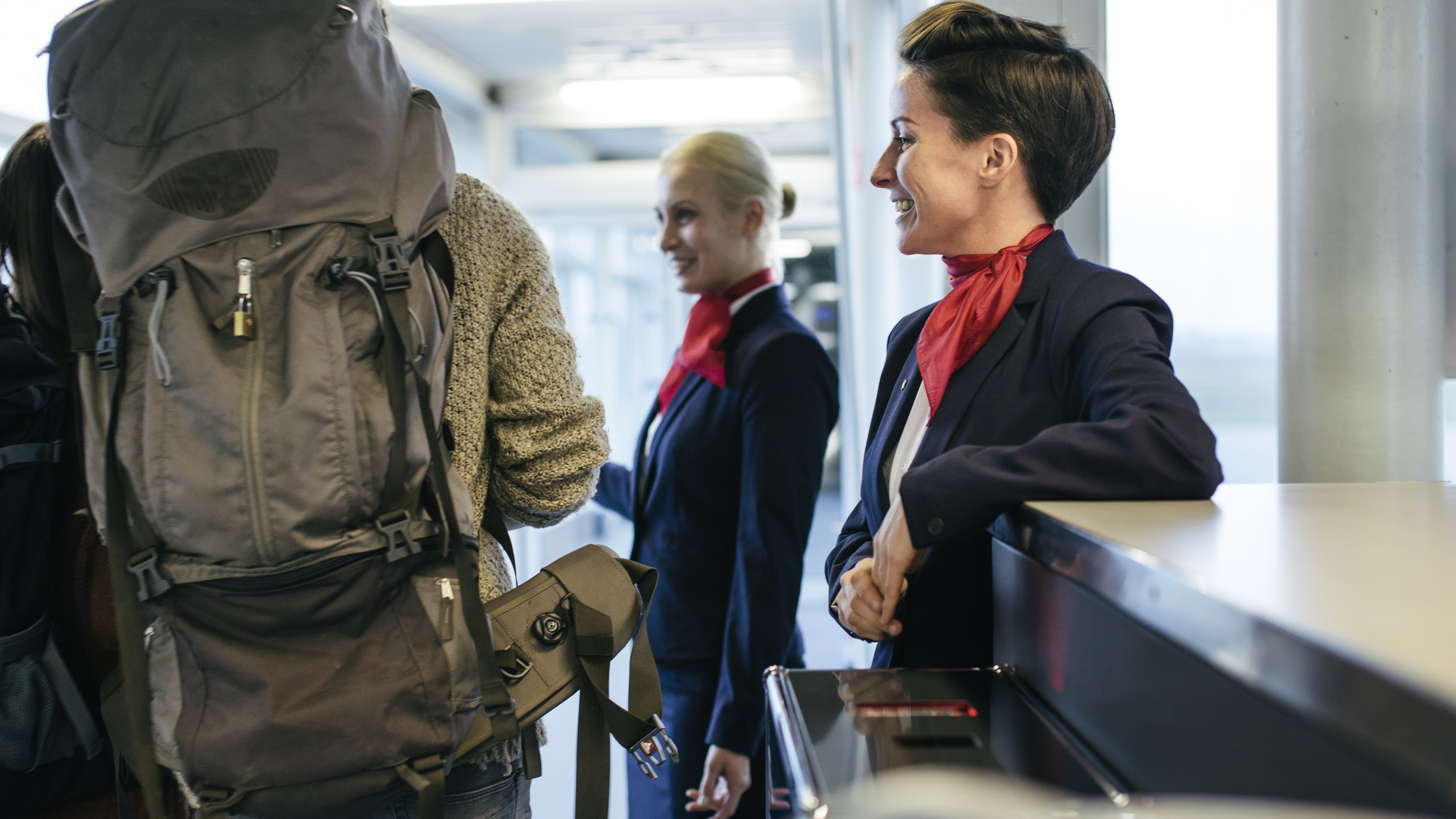
It can seem a bit daunting the first time you set out to fly with ski gear. The stress of avoiding extortionate baggage fees and the worry that you'll never see your kit once again once you make it to the other side are just two of the downsides. Perhaps you've done it before, wearing your ski boots and sweating the entire journey thanks to your insulated ski jacket, just to avoid additional fees.
Well, with a few expert tips and trips, there's no need to stress at all. Before you book anything, I’d recommend reading through my 7 top tips for flying with ski gear. Figure out whether you want to bring all of your gear or rent some, and whether you plan to travel light or risk paying extra baggage fees. Once you’ve decided that, you can shop around different airlines to find out which ticket will be the best deal for you.
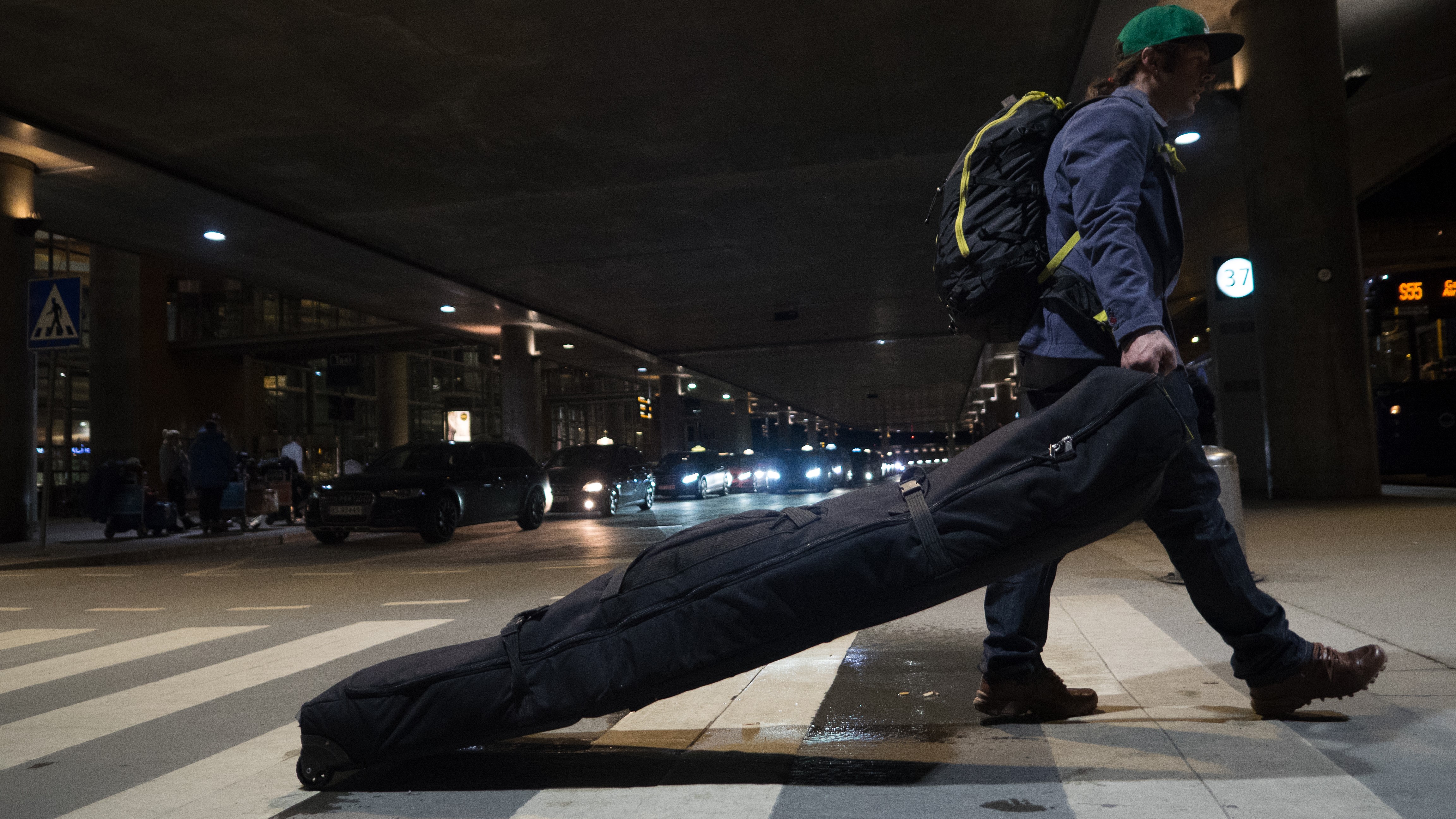
The first time I flew with ski gear, let’s just say it was trial by fire. I was living in New York City, getting divorced and decided on a whim to head out to Colorado to stay with friends for Christmas. I owned a pretty nice pair of K2 skis and naturally, I wanted to get them out on the snow rather than just letting them gather dust in my tiny Upper East Side apartment. I booked my ticket and quickly had to figure out the world of flying with ski gear, which meant borrowing a ski bag from a friend and trying not to get hosed on excess baggage fees and that was all before figuring out how to fit my skis into a yellow cab.
Long story short, me and my skis made it to Colorado and I had such a good time I moved there three months later, but in the process, I figured out a few things I could have done differently, from packing to saving on fees. Since then, I’ve made many flights carrying varying amounts of ski gear, at times loading everything up in a giant suitcase and at others traveling with a carry-on for press trips where I was carrying a laptop and renting some gear.
Sign up for frequent flyer programs
- It's worth signing up even if you don't fly frequently
- Free checked bags is a really useful perk for skiers
Even if you don't fly a lot, it’s worth signing up as a frequent flyer for various airlines. Though you have to fly – or spend – a lot in order to gain free flights and first class upgrades, there are other perks like free checked bags that come in mighty handy when you’re flying with planks.
If you choose the right airline and you're smart about how you pack, you could end up flying your gear without any extra charges. I primarily flew in and out of Denver for years, a United hub, so I was a United frequent flyer which meant I could check my ski bag and boot bag for free if I wanted to.
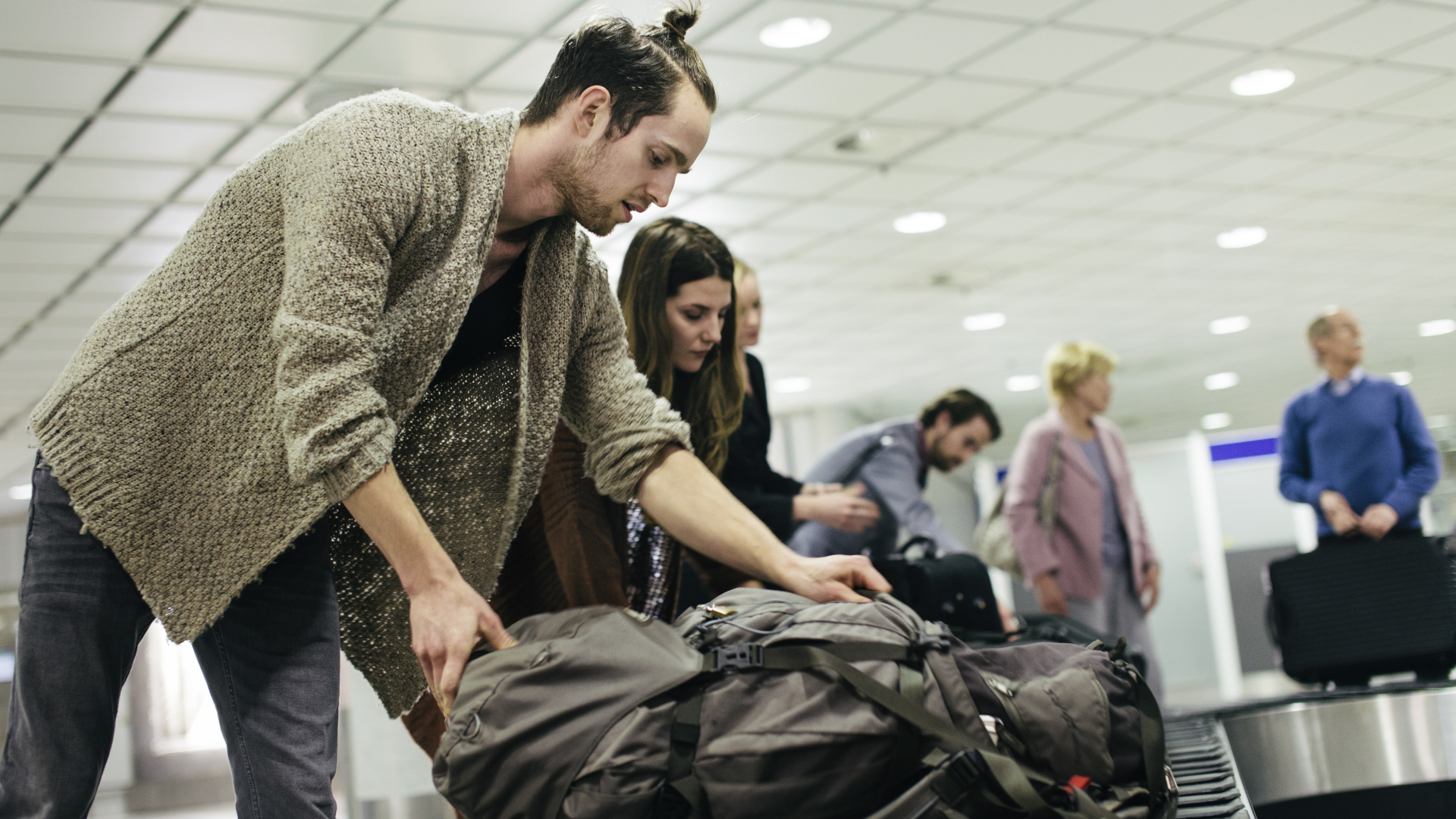
Load up your ski bag
- Most airlines insist on a ski bag rather than skis simply velcroed together
- Ensure it meets your airline's weight and length guidelines
- Pack other bits in your ski bag along with your skis
Regardless of how light you want to travel, if you’re flying with skis or a snowboard, you’ll need a special bag to transport them – don’t just think you can bind them together with a velcro strap and rock up to the airport. Guidelines differ from one airline to another, but generally a ski bag will be classified as sporting equipment rather than oversized luggage.
All the latest inspiration, tips and guides to help you plan your next Advnture!
You’ll also want to check on your airlines’ weight and length restrictions for your ski bag to make sure yours passes. A padded bag on wheels will afford your skis more protection and make it easier to move through the airport, but will add a little weight.
Though your ski bag should really only contain your skis and poles, you’ll usually be able to sneak some of your ski clothing in with your skis – I flew to Verbier last year and my friend had managed to get all of her ski clothes into her ski bag, carrying just a small daypack on board. If you’re doing this, wrap your clothes around your skis for more padding and protection and always make sure you weigh your bag before you head to the airport, otherwise you might end up wearing all your ski gear on the plane after all.
When you arrive at your destination, head to baggage claim and your skis will most likely come out at the separate section earmarked for oversized baggage rather than the luggage carousel. These bags will often come out last, so don’t panic if you have to wait a bit.
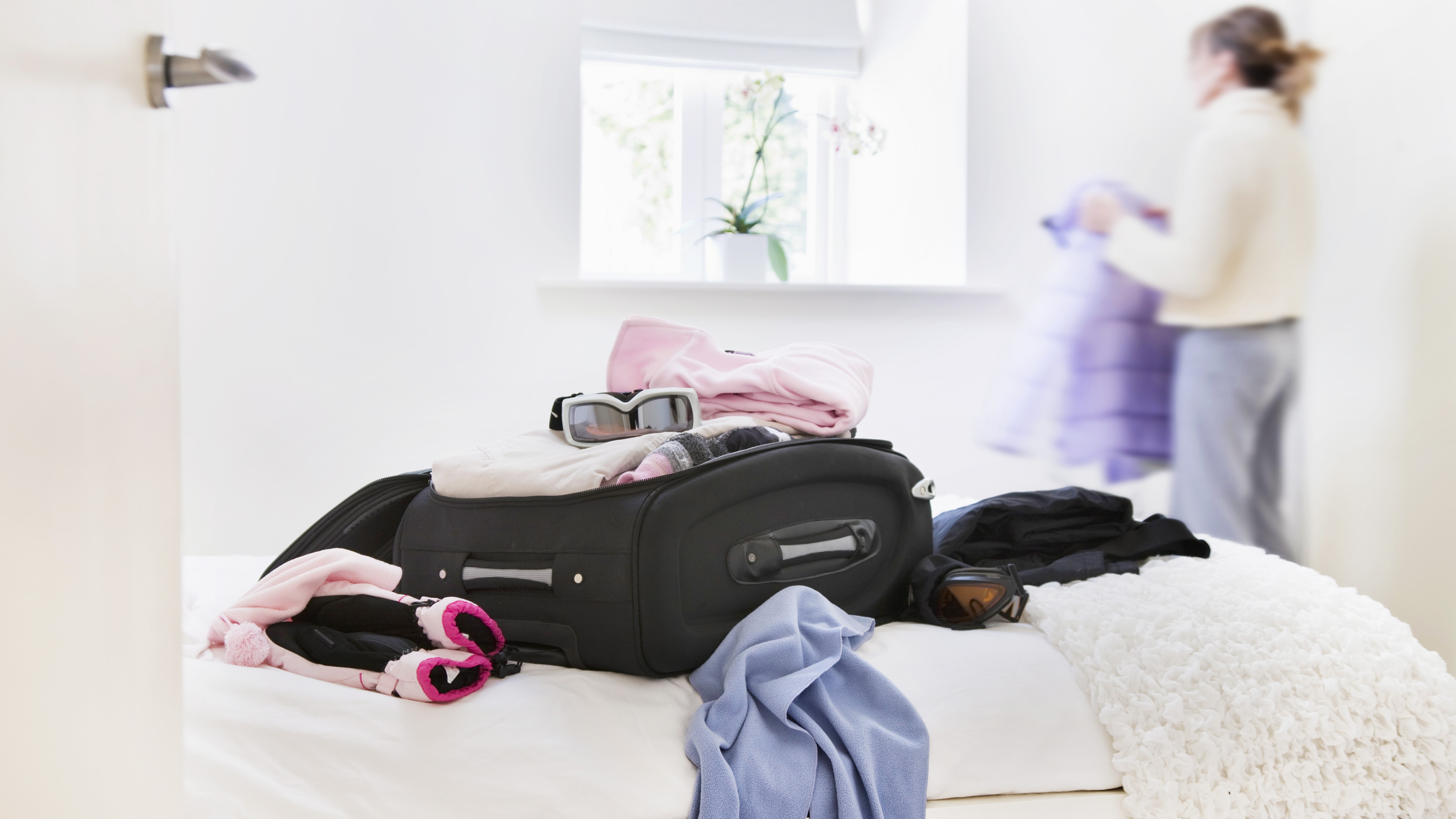
Bulk up your boot bag
- Boot bags are often not counted as additional luggage when bundled with your ski bag
- Pack them out with other items, like gloves, socks, base layers etc.
In addition to your skis, you’ll need to pack your boots and helmet, both of which take up quite a bit of room. If you’re also checking a large suitcase with all of your clothes and toiletries, you might be able to fit your boots in there, but if not, don’t worry.
You can invest in a boot bag that’s pretty roomy and, as far as most airlines are concerned, doesn’t actually count as a separate piece of luggage from your skis. Your bag might also fit your helmet, and you can most likely slide rolled up clothing like your ski gloves, ski socks, base layers, thermal underwear and even ski pants inside your boots to take advantage of the extra space.
That said, while you might be willing to rent skis if yours go missing, you probably want to have your own boots which have perfectly molded to your feet. If you don’t want to check your boots, you can probably bring your boot bag on board as a carry on, but check the dimensions first.
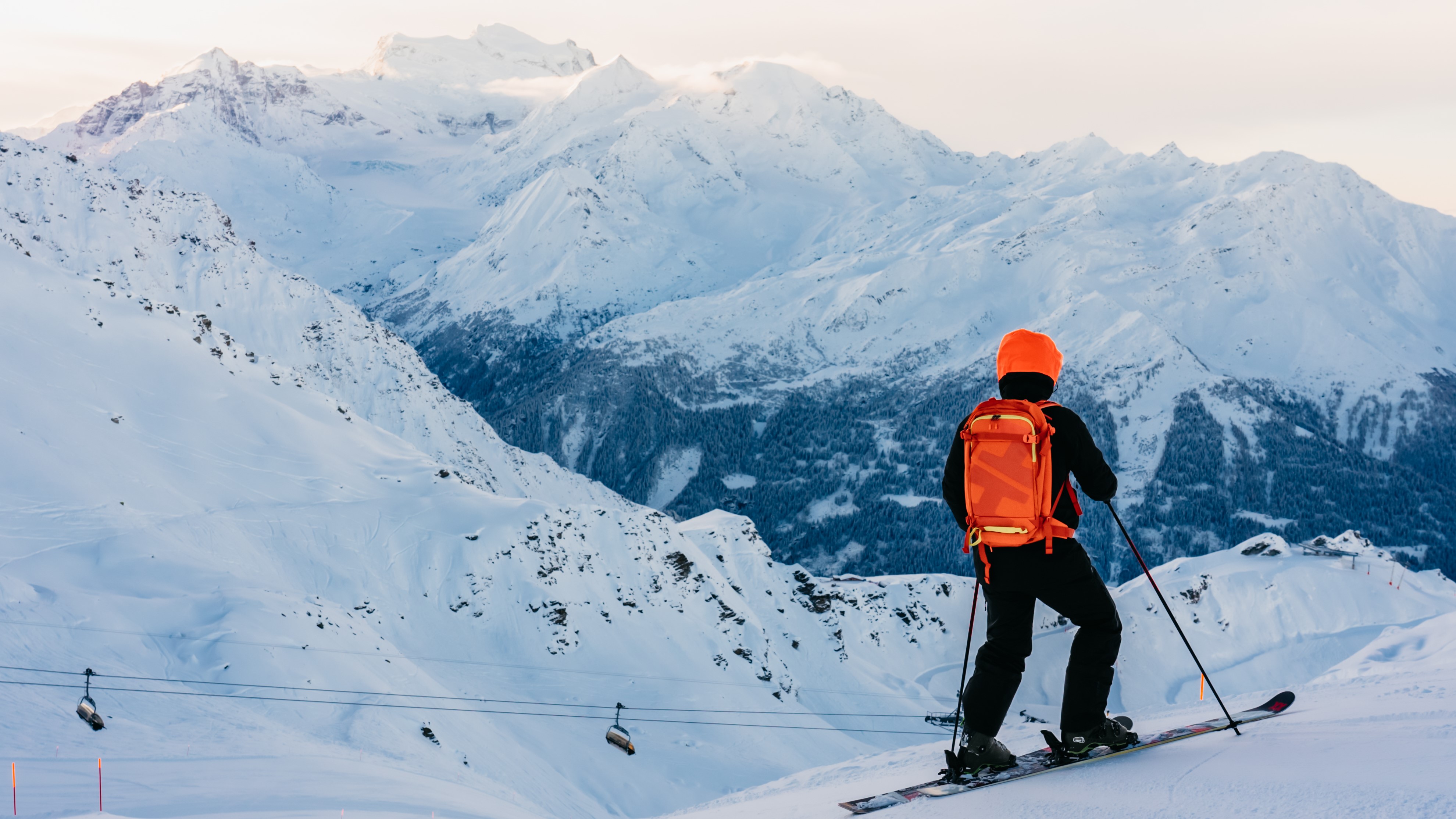
Try a ski backpack
- A ski backpack is ideal for the slopes and as a means of transporting kit
- You can carry a ski backpack on the flight as carry-on luggage
My preferred method for transporting my boots and helmet is actually to use a ski backpack. These backpacks are built for backcountry skiing, and meant to carry bulky gear like your avalanche beacon and probe, but they can work well as a carry-on too.
I often use Helly Hansen ULLR RS30 ski backpack, which is small enough to carry on but roomy enough for my boots, laptop, spare clothes and toiletries if I’m traveling very light, and I can strap my helmet to the outside. For a burlier option, I managed a weeklong trip to Vail using my Peak Design Travel Bag 45L which is somewhere halfway between a small suitcase and a backpack.
I have to admit that what I love most about this option, in addition to keeping my baggage fees down and lowering my risk of losing gear, is that when I get to the airport I have my hands free to manage my ski bag. I’ve seen people trying to juggle both a ski bag and a suitcase and truly, it does not look fun.
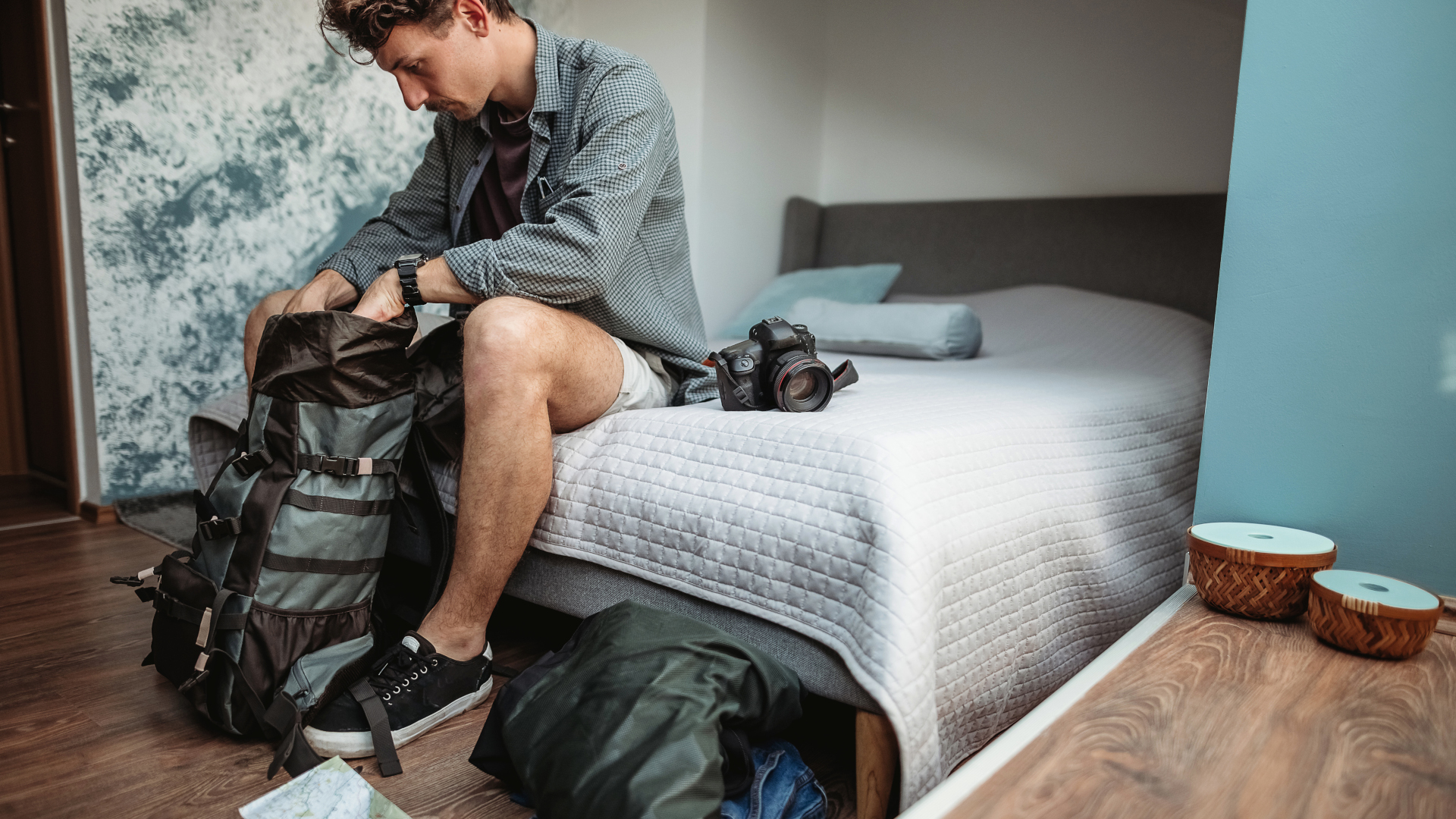
Pack smart
- Ski resorts are generally casual affairs so no need to pack loads of clothes
- Bring clothing that work both on the slopes and in the bar
If you’re planning to travel light and want to try to make the journey by stashing gear in your ski and boot bag and only bringing a carry-on, the good news is that you really don’t need much in the way of other clothes for a ski holiday.
Most ski resorts embrace the “mountain casual” ethos and no one blinks an eye if you roll into a five star restaurant in your sweatpants. After a long day of skiing, you’ll want to be comfy and cozy, not dolled up in heels, so wear loose clothing on the plane that you can change back into after skiing.
You can also choose garments that perform double duties like a smart-looking mid layer that keeps you warm on the hill but can be paired with jeans at night. If you want to do other activities like yoga or running, bring stretchy clothes like leggings that can be worn across multiple activities from travel and working out to relaxing back at the condo.
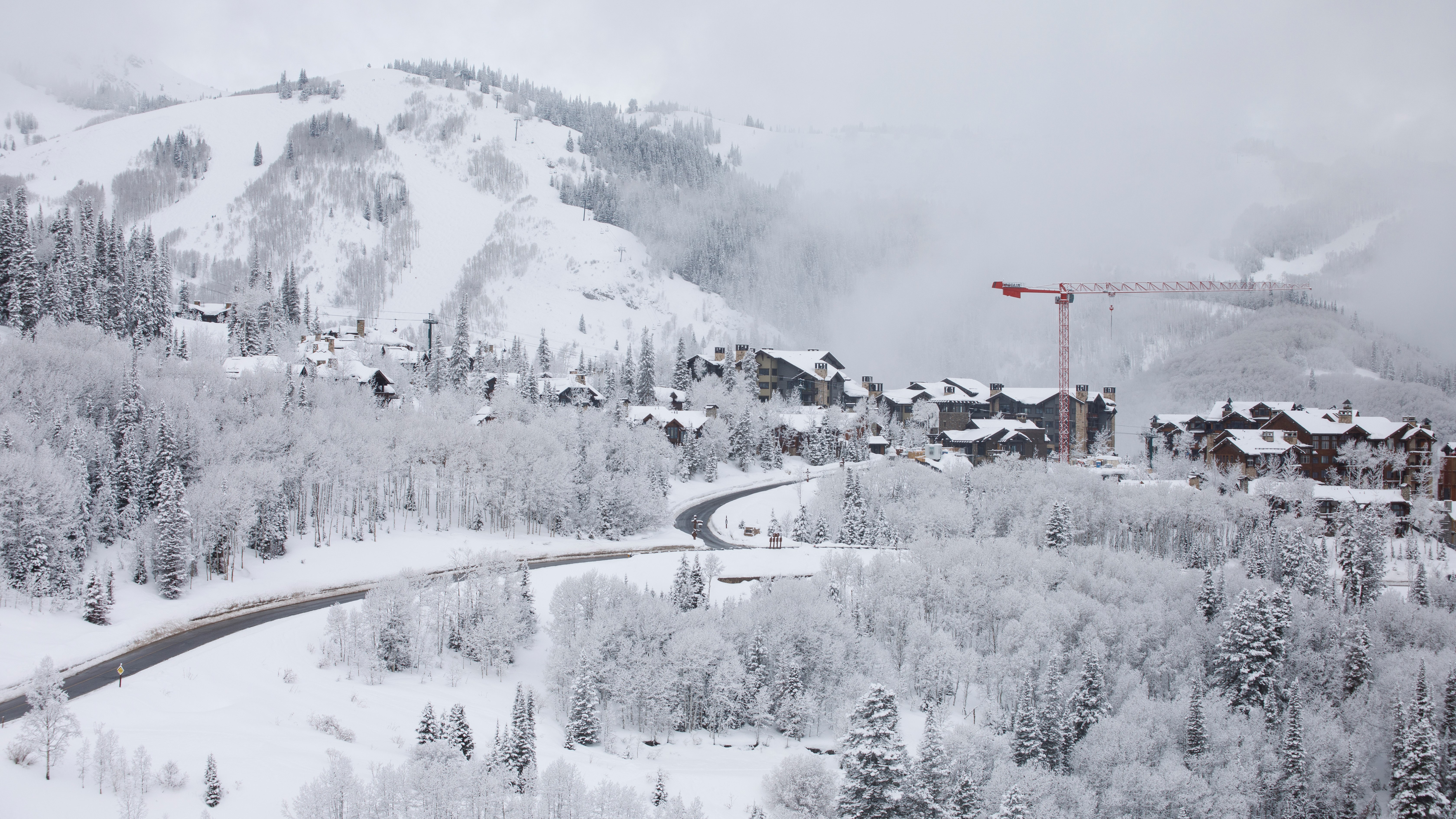
Have a backup plan
- Ensure you have travel insurance to replace missing items
- Carry items you can't live without along with you
- Be prepared to rent gear if necessary
According to reporting in the Independent, a whopping 26 million bags went missing in 2022 alone. More bags make it than not, but it is possible that you’ll arrive at the resort without your ski gear, and frankly, that’s a bit more disastrous than arriving at a beach holiday without your swimsuit.
No matter what, make sure you have good travel insurance to quickly replace missing items, and bring anything you really don’t want to have to live without (like your favorite ski goggles) in your carry on bag. Be flexible and ready to just rent gear if you need to – you can usually get these costs refunded by your trip insurance, credit card or the airline.
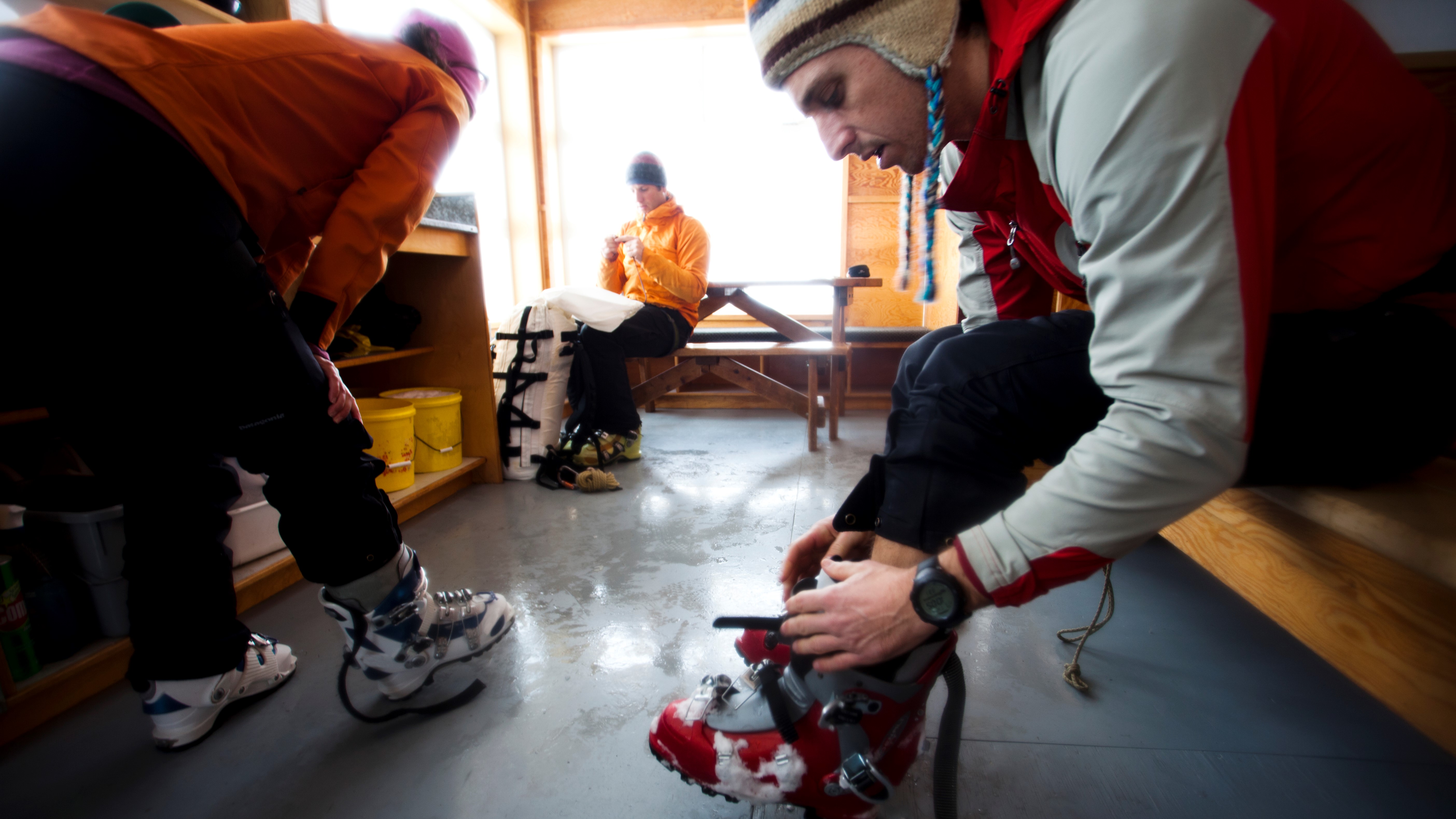
Consider renting gear
- Renting gear means less hassle and no extra baggage costs
- It's convenient and not as expensive as you might assume
Finally, I know this is an article about flying with ski gear, but I’d be remiss if I didn’t point out that if you’re traveling, renting ski gear is much easier, and if you end up paying loads of excess baggage fees, doing so might not cost you any more in the long run.
Though I’ve flown with skis plenty between the east coast and the Rockies, when I flew from Scotland to Denver two years ago for a ski trip, I finally decided to enter the world of ski rentals and honestly, it was a revelation.
I booked my rentals ahead of time and was surprised at how affordable it all was for five days, even at a very expensive resort. When I arrived in the afternoon, I popped over and got all kitted out within about 10 minutes, then brought my skis over to my hotel and stashed them in the boot room. In the morning, it meant I could get right up on the hill after breakfast and honestly, I don’t think I’ll fly with skis ever again.
Julia Clarke is a staff writer for Advnture.com and the author of the book Restorative Yoga for Beginners. She loves to explore mountains on foot, bike, skis and belay and then recover on the the yoga mat. Julia graduated with a degree in journalism in 2004 and spent eight years working as a radio presenter in Kansas City, Vermont, Boston and New York City before discovering the joys of the Rocky Mountains. She then detoured west to Colorado and enjoyed 11 years teaching yoga in Vail before returning to her hometown of Glasgow, Scotland in 2020 to focus on family and writing.

